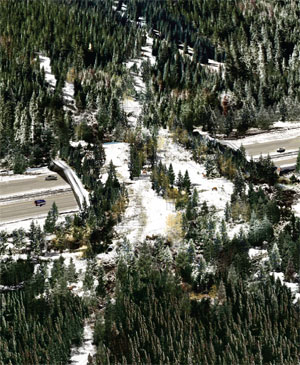Saving nature in a post-wild world
Interview with Emma Marris, Author of Rambunctious Garden: Saving Nature in a Post-Wild World Guest post by the American Society of Landscape Architects. Emma Marris is author of Rambunctious Garden: Saving Nature in a Post-Wild World and has also written for Nature. Read her op-ed on the Anthropocene in The New York Times. In your new book, Rambunctious Garden: Saving Nature in a Post-Nature World, you argue that “we are already...
How landscape design can protect New Orleans
Guest post by the American Society of Landscape Architects. Elizabeth Mossop. Image credit: Spackman Mossop + Michaels Since becoming the director of the School of Landscape Architecture at Louisiana State University (LSU), you focused on bringing the Delta Region back after Hurricane Katrina. You’re on the board of LSU’s Coastal Sustainability Studio, which features a great mix of scientists, engineers, and designers focused on...
Flowers’ power of seduction
Guest post by the American Society of Landscape Architects. This post is by Shannon Leahy, ASLA 2011 Summer Intern. According to this recent TED talk given by Jonathan Drori, life really is all about the birds and the bees, with a lot of help from flowers. Flowering plants, of which there are at least a quarter of a million known species, have evolved to develop fascinating traits in order to reproduce. Flowers are difficult to...
If you love or hate crows
Guest post by the American Society of Landscape Architects Lyanda Lynn Haupt is an award-winning author, speaker, and naturalist based in Seattle. Her latest book, “Crow Planet: Essential Wisdom from the Urban Wilderness“, which David Sedaris called “completely charming and informative,” received the 2010 Sigurd F. Olson Nature Writing Award. Haupt blogs at The Tangled Nest. Your new book, “Crow Planet:...
Oyster reefs a cheaper and more effective way to clean coastal waters
This post originally appeared ASLA’s “The Dirt” blog as Oyster-Tecture in Action Sustainable designer Neil Chambers, author of “Urban Green: Architecture for the Future,” made the case for using natural systems to clean and manage water at a conference organized by The Economist. In Myrtle Beach, South Carolina, beach tourism had been negatively impacted by heavy water pollution. Instead of re-engineering...
Wildlife crossings can be designed to be safer for humans and animals
The ARC International Wildlife Crossing Infrastructure Design Competition, the first international competition of its kind, says collisions between wildlife and cars in the U.S. have increased by 50 percent in the past 15 years. Not only do these collisions take a huge toll on both wildlife and people, but they also cost the U.S. some $8 billion per year.
Designing human landscapes for the full range of biodiversity
The ecological principles many landscape architects are applying to their habitat restoration projects may now be “outdated, or even misconstrued.” Increasingly, designers need to be mindful of the “full range” of biodiversity. Landscape architects, Beardsley argued, have been successful with plant diversity, but less so to date with other kinds of biodiversity.
Cities are at the edge of climate change
At a recent conference on designing wildlife habitats, you said cities are always warmer than surrounding areas because of the urban heat island effect. Cities are then precursors to climate change. In fact, “cities are at the edge of climate change.” What can cities’ experience with elevated heat levels teach us about best and worst ways to mitigate and adapt to climate change?






